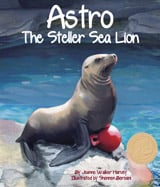Alignment to Standards for NY

| Grade | Number | Standard |
|---|---|---|
| K,1,2,3,4 | K-4..3.1a (iv) | claws, shells, spines, feathers, fur, scales, and color of body covering enable some animals to protect themselves from predators and other environmental conditions, or enable them to obtain food |
| K,1,2,3,4 | K-4..3.2a | Individuals within a species may compete with each other for food, mates, space, water, and shelter in their environment. |
| K,1,2,3,4 | K-4.2.1b | Some characteristics result from an individualês interactions with the environment and cannot be inherited by the next generation (e.g., having scars; riding a bicycle). |
| K,1,2,3,4 | K-4.3.1a | Each animal has different structures that serve different functions in growth, survival, and reproduction. |
| K,1,2,3,4 | K-4.3.1a (i) | wings, legs, or fins enable some animals to seek shelter and escape predators |
| K,1,2,3,4 | K-4.3.1a (iii) | eyes, nose, ears, tongue, and skin of some animals enable the animals to sense their surroundings |
| K,1,2,3,4 | K-4.3.1c | In order to survive in their environment, plants and animals must be adapted to that environment. |
| K,1,2,3,4 | K-4.3.1c (iii) | animal adaptations include coloration for warning or attraction, camouflage, defense mechanisms, movement, hibernation, and migration |
| K,1,2,3,4 | K-4.4.1a | Plants and animals have life cycles. These may include beginning of a life, development into an adult, reproduction as an adult, and eventually death. |
| K,1,2,3,4 | K-4.4.1c | The length of time from beginning of development to death of the plant is called its life span. |
| K,1,2,3,4 | K-4.4.1e | Each generation of animals goes through changes in form from young to adult. Some insects change from egg to larva to pupa to adult. |
| K,1,2,3,4 | K-4.4.1f | Each kind of animal goes through its own stages of growth and development during its life span. |
| K,1,2,3,4 | K-4.4.1g | The length of time from an animalês birth to its death is called its life span. Life spans of different animals vary. |
| K,1,2,3,4 | K-4.4.2a | Growth is the process by which plants and animals increase in size. |
| K,1,2,3,4 | K-4.4.2b | Food supplies the energy and materials necessary for growth and repair. |
| K,1,2,3,4 | K-4.5.1b | An organismês external physical features can enable it to carry out life functions in its particular environment. |
| K,1,2,3,4 | K-4.5.2b | Animals respond to change in their environment, (e.g., perspiration, heart rate, breathing rate, eye blinking, shivering, and salivating). |
| K,1,2,3,4 | K-4.5.2d | Some animals, including humans, move from place to place to meet their needs. |
| K,1,2,3,4 | K-4.5.2f | Some animal behaviors are influenced by environmental conditions:nest building, hibernating, hunting, migrating, and communicating. |
| K,1,2,3,4 | K-4.6.1e | An organismês pattern of behavior is related to the nature of that organismês environment, including the kinds and numbers of other organisms present, the availability of food and other resources, and the physical characteristics of the environment. |
| K,1,2,3,4 | K-4.7.1b | Over time humans have changed their environment by cultivating crops and raising animals, creating shelter, using energy, manufacturing goods, developing means of transportation, changing populations, and carrying out other activities. |
| K,1,2,3,4 | K-4.7.1c | Humans, as individuals or communities, change environments in ways that can be either helpful or harmful for themselves and other organisms. |